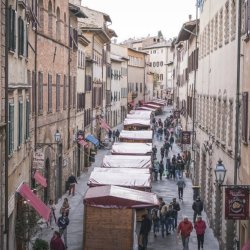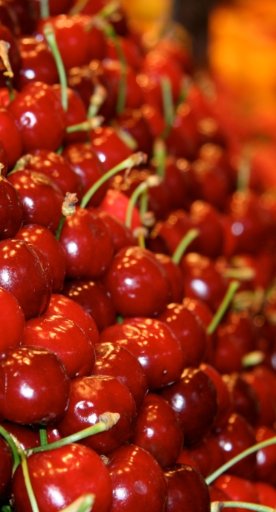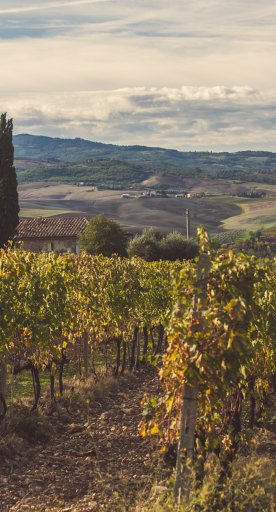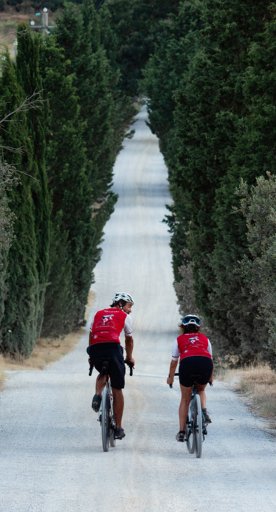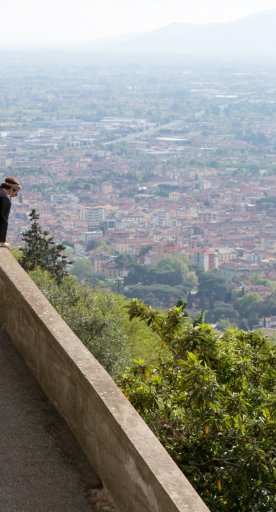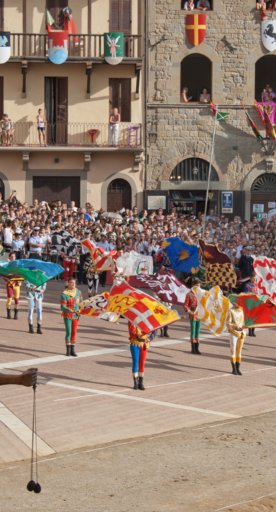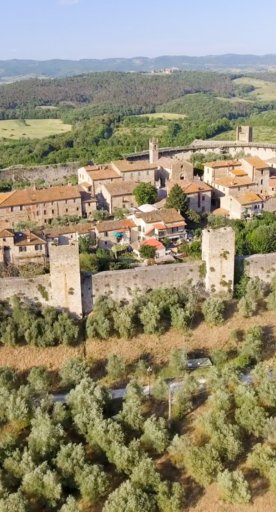
Color Still: discovering Kiki Smith’s sculptures in the Valdelsa
Three almost identical sculptures in three villages around the Valdelsa, where the contemporary art scene consists in works by internationally famous artists
Walking around the villages and nature of the Valdelsa Valdicecina, visitors come across typically narrow streets, old buildings and historic roads that tell the best-known side of Tuscany. They also go hand in hand with a contemporary art scene consisting in works of artistic and symbolic worth by some famous international names, such as Kiki Smith.
The US artist’s time in the Valdelsa can be seen in three closely connected works: Yellow Girl, Blue Girl and Red Girl. The sculptures were initially part of a series of nine identical girls, each with a different colour dress but otherwise the same, which were presented during the 2003 Japanese exhibition “Everything is Museum”.
Their arrival in the Valdelsa is down to a number of contemporary and outdoor art projects, which have been carried out here over the years and especially Arte all’Arte in Colle Val d’Elsa in 2011. Color Still (the name of the project) refers to the steadiness of daily moments, hence the girls, sitting alone, separated in the space and almost contemplating, are actually linked by the common thread of their coloured dresses.
Kiki Smith’s three sculptures are now located in three different villages and can be explored on a contemporary tour imbued with an international feel.

“Red Girl” can be visited in Colle Val d’Elsa. The sculpture is situated in a tunnel leading to the lift that connect the old and new parts of the town. It’s a symbolic place, designed by architect Jean Nouvel as a work of contemporary architecture and the regeneration of historic Second World War spaces. Like the other two girls, Kiki Smith’s “Red Girl” is surrounded by glass light bulbs that descend from the ceiling to represent the moment of creation, the famous “spark” of awareness. The choice to accentuate the artwork with glass elements was made by the artist to link the work with the local area. The glass produced in Colle Val d’Elsa is exported all over the world and can be explored in local stores or in the Glass Museum.

Another two towns host Kiki Smith’s sculptures, positioned in old, symbolic spot to create an ongoing dialogue between past and present.
In Poggibonsi, “Blue Girl” observes passersby from a niche in the Medici Fortress of Poggio Imperiale, which also provides access to the Bridge House and Antony Gormley’s nearby pixelated man, a metal sculpture that is part of a set of seven works – all in Poggibonsi – and whose presence here in down to the 2004 Arte all’Arte project.
“Yellow Girl” is on display among the centuries-old walls of Rocca di Montestaffoli in San Gimignano, surrounded by silence and its glass bulbs.
The contemporary art found in the Valdelsa and Valdicecina is a treasure chest worth exploring for an original take on Tuscany, maybe while enjoying a tour designed for family holidays.




